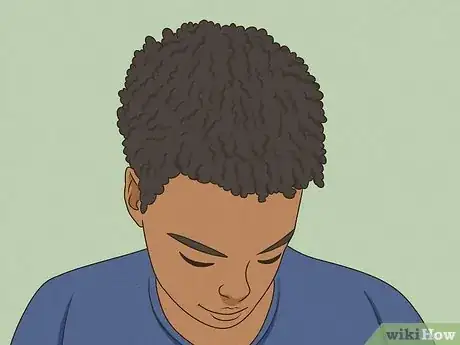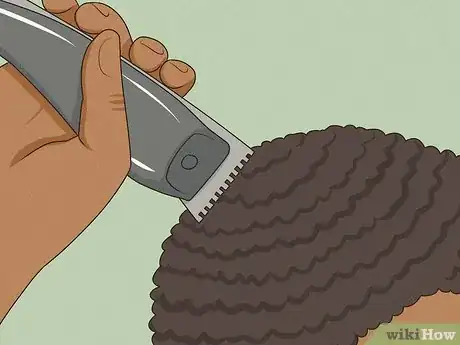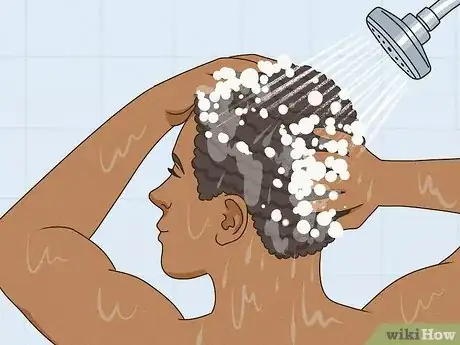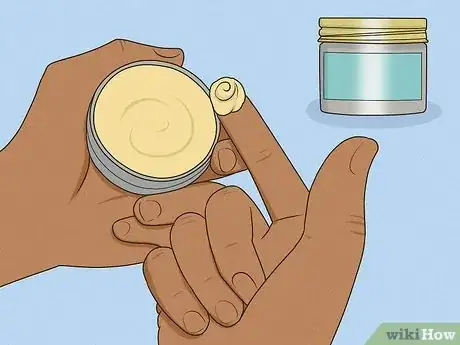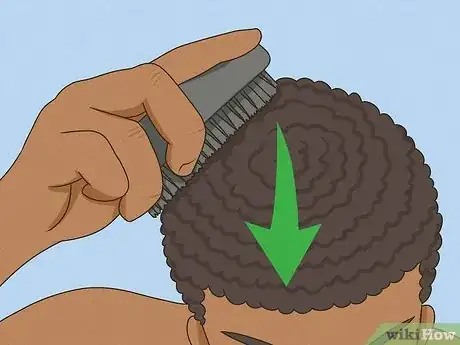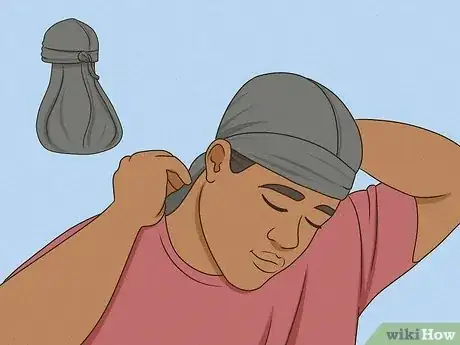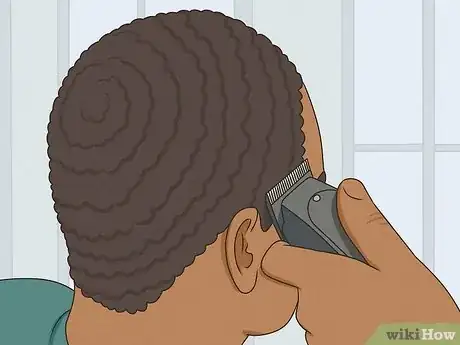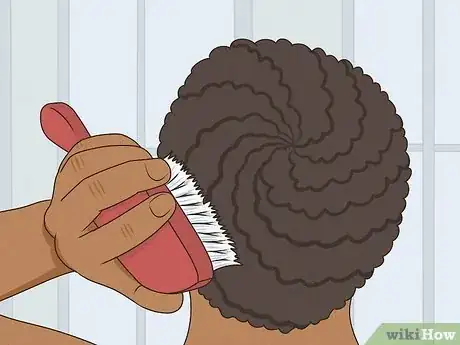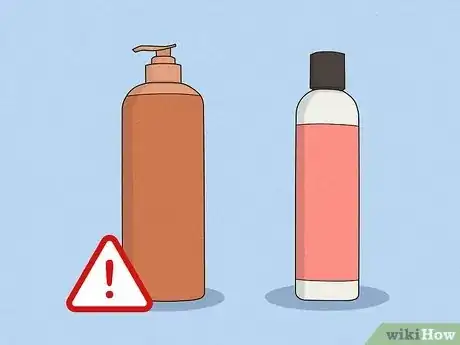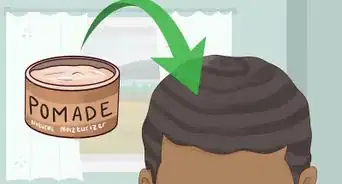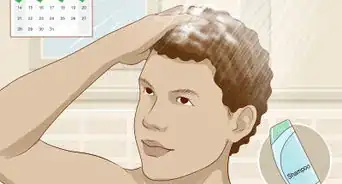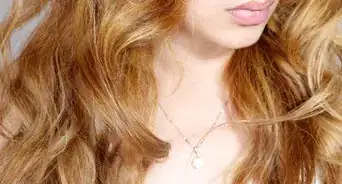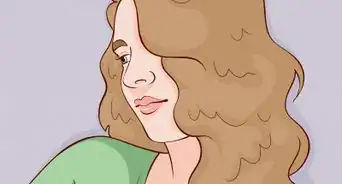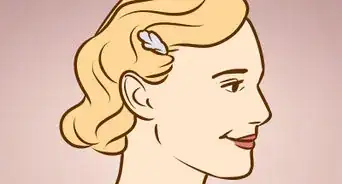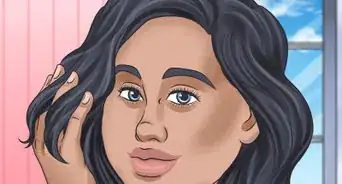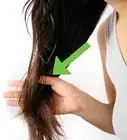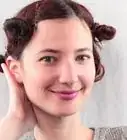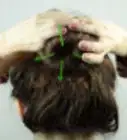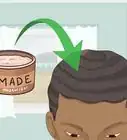This article was co-authored by Courtney Foster and by wikiHow staff writer, Luke Smith, MFA. Courtney Foster is a Licensed Cosmetologist, Certified Hair Loss Practitioner, and Cosmetology Educator based out of New York City. Courtney runs Courtney Foster Beauty, LLC and her work has been featured on The Wendy Williams Show, Good Morning America, The Today Show, The Late Show with David Letterman, and in East/West Magazine. She received her Cosmetology License from the State of New York after training at the Empire Beauty School - Manhattan.
wikiHow marks an article as reader-approved once it receives enough positive feedback. This article received 24 testimonials and 100% of readers who voted found it helpful, earning it our reader-approved status.
This article has been viewed 2,396,941 times.
There’s nothing quite like unwrapping that durag to find the start of a fresh spiral of 360s. "Waves" go by many names, and are essentially a hairstyle that consists of uniform ridges in short, curly hair. Rocked by rappers, football players, and talk show hosts alike, a set of spinners is priceless, and the satisfaction of your hard work paying off is equally rewarding. It takes some care and dedication (and several weeks) to get the kind of waves that’d make your friends seasick, though. That’s why we’ve come through with a simplified guide on how to get waves, including refreshing your hair, training your waves, and maintaining the classic look.
Things You Should Know
- Grow out your hair for 4-6 weeks, then cut it back to about 0.125 in (0.32 cm). This helps train your hair to coil before you start the routine.
- Wash and exfoliate your scalp to reset your hair’s oils and other buildup, and use a moisturizing conditioner and pomade.
- Use a wave brush to brush your hair away from the crown of your head, working for about 5-10 minutes, 5 times a day.
- Wear a durag any time you’re not washing or brushing, and especially when you’re sleeping.
Steps
Refreshing Your Hair
-
1Grow out your hair for 4-6 weeks to start training your waves. One way to kickstart your waves is to do what’s known as “wolfing,” where you let your hair grow long while washing and brushing it to encourage the formation of waves. Once you get it cut (and if you’ve taken good care of it), you’ll find that your waves are already coming in.
- While wolfing, follow the waves maintenance routine outlined below. Think of this as your prep period where you start training your hair. You’ll follow the same routine after you get a cut, but this time it’ll be for real.
-
2Cut your hair to about 0.125 in (0.32 cm). It’s best to start with a fresh head of hair so you can train your new hair as it grows in. Visit a barber and ask for a #1 trim, or cut your own hair with a #1 clipper guard, moving the clippers down along the grain of your hair as you cut.[1]
- You might also ask your barber what length of hair they recommend for your waves. A #1 is a good general cut, but different curl types will thrive with different trim lengths.
- If you’ve been wolfing, cut your hair a bit longer to preserve the waves that have already come in. The length you cut will be different for each hair type, so we recommend visiting a barber in this case.
Advertisement -
3Wash and exfoliate your hair and scalp. You want a solid foundation to build those waves, so go ahead and scrub your scalp with an exfoliating shampoo and a clarifying conditioner. This will refresh your scalp, scrubbing away excess oils, dandruff, and other buildup.[2] If your hair is long enough to get curls, your hair will be long enough for waves. Make sure your hair is healthy so it will grow nice and long.
- It helps to clear dandruff and other scalp problems before attempting waves.
Training Your Waves
-
1Wash and condition your hair with sulfate-free shampoo twice a week. The most important part of getting waves is keeping your hair moisturized and nourished, so stay away from shampoos with sulfates, which can dry out your hair.[3] Use about a dime-sized amount, and always follow shampoo with at least as much conditioner, which restores and locks in moisture.
- Consider picking up a wave shampoo, which is shampoo specially formulated for anyone looking to achieve waves. These are generally gentle on the hair and heavily moisturizing.
-
2Apply a dollop of pomade or hair wax. After you get out of the shower, use your hands to distribute a small scoop of pomade throughout your hair. This goes even further to lock in moisture and keep your hair shiny and wave-ready. Go for a pomade made without petroleum jelly, which can clog your pores and stunt hair growth.[4]
-
3Brush away from the crown of your head. The crown is the point on your head where your waves will originate; it sits up high and a little back on your head. When you brush, start at this point, and move the brush away. At this point, when your hair is short, start with a soft wave brush, and count out about 50-60 strokes.[5]
- Be sure to brush evenly, hitting every section of your hair, and getting each section about the same number of strokes. This will help make uniform, pronounced waves.
- Your waves may come in as soon as a few weeks into the brushing routine, or as late as a few months. Every scalp is different, so stay persistent!
-
4Put on a durag to protect your hair. A durag does double duty, retaining moisture and protecting your emerging waves with a physical barrier. Tie your durag so that it’s snug but not too tight or constricting, and wear it any time you’re not washing or brushing, and especially while sleeping.[6]
- We recommend either satin or velvet durags, which are comfy, stylish, and effective.
- You’ll be able to wear your durag less often once your waves have fully formed, so don’t worry about having to cover up those hard-earned waves.
Maintaining Waves
-
1Get a cut every 2-3 weeks. Once you’ve got those deep, slick waves, hit up a barber to get a slight trim, which will keep them fresh and sharp. Your barber will know how much to take off, which depends on your hair texture and wave size.[7] While you’re at it, go ahead and get a clean lineup, or even a fade to level up your waves.
-
2Brush it whenever you can. This is the most laborious part, but there’s no skipping it. Any time you sit down to watch TV, wait for the bus, or just have a spare moment, whip out that brush and get to work. Once your hair gets a little longer and your waves come in, ditch the soft brush and pick up a medium or hard brush.[8]
- Aim to brush about 5 times a day, with about 50-60 strokes (or more) each session.
- If you have relatively straight hair, stick with a soft brush.
-
3Cut back shampooing to once a week and moisturize often. Now that you’ve got your waves, it’s important to keep them hydrated. From this point, only shampoo once every several days, but keep conditioning every other day or so, and especially on wash days.[9] Then, drink plenty of water every day, and don’t neglect the pomade routine. Remember to don the durag before bed, as well as any time you don’t need to make a totally fresh public appearance.
Expert Q&A
-
QuestionHow do you use sportin' waves?
 Laura MartinLaura Martin is a Licensed Cosmetologist in Georgia. She has been a hair stylist since 2007 and a cosmetology teacher since 2013.
Laura MartinLaura Martin is a Licensed Cosmetologist in Georgia. She has been a hair stylist since 2007 and a cosmetology teacher since 2013.
Licensed Cosmetologist You should warm the product in your hands and apply it to damp hair. Then use a brush to sculpt your hair into the desired style.
You should warm the product in your hands and apply it to damp hair. Then use a brush to sculpt your hair into the desired style. -
QuestionWhat is a du-rag used for?
 Laura MartinLaura Martin is a Licensed Cosmetologist in Georgia. She has been a hair stylist since 2007 and a cosmetology teacher since 2013.
Laura MartinLaura Martin is a Licensed Cosmetologist in Georgia. She has been a hair stylist since 2007 and a cosmetology teacher since 2013.
Licensed Cosmetologist It holds the hair in place and keeps it from being disturbed. It also keeps you from messing up your style by running your hands through it.
It holds the hair in place and keeps it from being disturbed. It also keeps you from messing up your style by running your hands through it. -
QuestionWhat is the best way to get 360 waves?
 Laura MartinLaura Martin is a Licensed Cosmetologist in Georgia. She has been a hair stylist since 2007 and a cosmetology teacher since 2013.
Laura MartinLaura Martin is a Licensed Cosmetologist in Georgia. She has been a hair stylist since 2007 and a cosmetology teacher since 2013.
Licensed Cosmetologist You need to brush your hair regularly to create the wave pattern. It is also helpful to wear a du-rag to keep the waves in place.
You need to brush your hair regularly to create the wave pattern. It is also helpful to wear a du-rag to keep the waves in place.
References
- ↑ https://www.gq.com/story/how-to-get-waves
- ↑ https://www.themanual.com/grooming/how-to-get-waves/
- ↑ https://www.themanual.com/grooming/how-to-get-waves/
- ↑ https://www.gq.com/story/how-to-get-waves
- ↑ https://www.gq.com/story/how-to-get-waves
- ↑ https://www.gq.com/story/how-to-get-waves
- ↑ https://hairmanz.com/360-waves/
- ↑ https://www.gq.com/story/how-to-get-waves
- ↑ https://www.newson6.com/story/5e9a1eb6fea97727071b9f5c/how-to-get-waves:-the-ultimate-guide-to-360-waves
About This Article
If you want to get 360 waves, wash your hair with wave shampoo and conditioner, then apply lotion and pomade to your hair as soon as you get out of the shower. Use a hand brush to brush your hair down on the front, sides, and back, then place a stocking cap securely over your hair to hold the wave in place. The cap should be tight, but not too tight, and you should leave it on for at least 30 minutes. Over time, your hair will form the waves easier as you train it. To learn more about the hair tools and products needed to create this look, read on!
